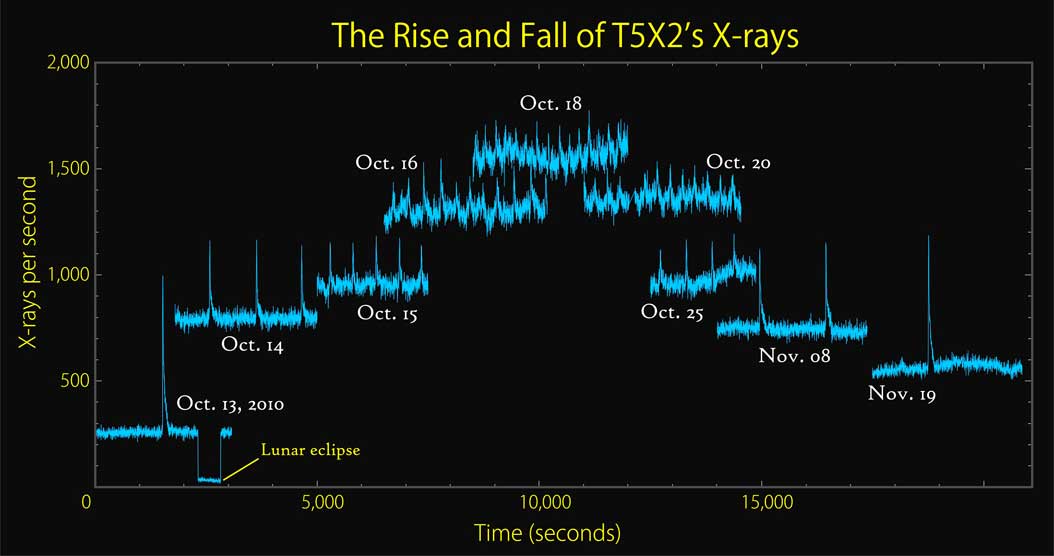
 Credit: NASA/Goddard Space Flight Center
Credit: NASA/Goddard Space Flight Center
We Have Ignition
Stars are stars because, deep in their innermost regions, where densities and temperatures are highest, they convert simple chemical elements to more complex ones. This process, called thermonuclear fusion, is normally hidden from view by the bulk of the star. But the end result of internal fusion can produce a star in which the core is inert, and in which thermonuclear fusion may occur on the stellar surface, where we call can watch it. These objects, called neutron stars, are the densest things we can directly study. They are formed by crushing the dead core of a star when the core nuclear fuel is exhausted, when the star explodes as a supernova. But if the exploding star happens to be in a gravitationally bound orbit around a companion star (and if this binary system can survive the supernova), fusion on the neutron star can be resuscitated by robbing mass from the companion. This process reveals itself by generating enormous amounts of high energy X-rays. Shown above are X-ray brightness measurements, obtained by the Rossi X-ray Timing Explorer, of such a strange binary system, known as T5X2. This binary lives in a globular cluster of stars called Terzan 5, and the neutron star in the system is accreting matter from the companion. As hydrogen-rich material from the companion falls onto the neutron star, it eventually coats the neutron star in a layer inches thick. When the temperatures and pressure of this layer reach a critical value, hydrogen can start to fuse into helium, releasing enormous amounts of energy and a large burst of X-rays, seen by RXTE. This explosive burning disrupts the nuclear burning surface layer, which can eventually rebuild itself and start the process anew. The RXTE data show an interesting result, long suspected by astronomers but never before observed: that when the rate of accretion onto the neutron star is high enough, the surface layer can burn stably without triggering a disruptive outburst.
Published: March 19, 2012
<
HEA Dictionary ● Archive
● Search HEAPOW
● Other Languages
● HEAPOW on Facebook
● Download all Images
● Education ● HEAD
>

Each week the HEASARC
brings you new, exciting and beautiful images from X-ray and Gamma ray
astronomy. Check back each week and be sure to check out the HEAPOW archive!
Page Author: Dr. Michael F. Corcoran
Last modified Monday, 26-Feb-2024 17:24:05 EST


